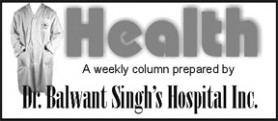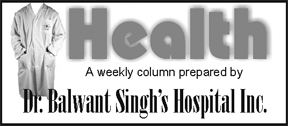By Dr Kiran Koora, MDS
Milk teeth serve as the pathway for the permanent teeth. If a child has good primary teeth, he or she will most likely have good permanent teeth. The primary teeth also permit the child to chew food properly, allow for clear pronunciation and speech habits, and provide for a healthy smile that promotes your loved one’s self-esteem.

One key reason is that they save space for the permanent tooth, which will erupt into its position when the baby tooth is lost normally. If a milk tooth has to be removed early due to say, an abscess, or is knocked out in some kind of trauma, a space maintainer may be recommended to save the space. If the space is not preserved, the other teeth may drift causing crowding [crooked teeth] and orthodontic problems. Crooked and/or crowded teeth in turn can lead to difficulty in chewing and accumulation of food particles. Malaligned teeth are more difficult to clean so the child is put at a greater risk for tooth decay.
A space maintainer can be fixed or removable. Fixed space maintainers are cemented or placed into the child’s mouth and removed when the permanent tooth is about to erupt. A removable space maintainer looks like a retainer. It uses artificial teeth or acrylic blocks to fill in the space or spaces that need to stay open. Removable space maintainers work well in older children who can reliably follow directions about caring for this appliance.
All space maintainers are a combination of steel wires and rings that fit the appropriate teeth surrounding the area of the lost tooth. These rings and wires help maintain the space that the permanent tooth will need in order to erupt at a later time. Children missing several teeth can use a partial denture instead of a space maintainer. For example, children with a congenital disease called ectodermal dysplasia often are missing multiple primary teeth.
If there is no permanent tooth, the space maintainer will be used until your child’s growth is completed (age 16 to 18), and then a bridge, implant or removable partial denture can be placed in the space.
After a space maintainer is placed, it is very important that the child visit the dentist at least every six months to check the incoming permanent tooth status by taking X-rays. When the tooth is ready to erupt, the space maintainer is removed. The appliance may require wire adjustment to allow the permanent tooth to come into proper position. Due to the constant change in children’s mouths, occasionally space maintainers need to be remade prior to the eruption of the permanent tooth.
Space maintainers can cause problems, especially if your child does not brush well. The gum tissue in the space can grow over the wire arm, increasing the risk of infection. Others may be at risk of injury if the space maintainer comes loose or breaks. So the regular visits to dentist allow the space maintainer to be monitored. If your child has a fixed space maintainer, he or she needs to avoid chewy candy and gum, which can make the space retainer loose. Finally, your child shouldn’t push on the space maintainer with his or her tongue or fingers because that could bend or loosen it. The space maintainer may feel unusual at first, but after a few days, your child probably will forget about it. A removable space maintainer with replacement teeth can affect speech until your child gets used to it.
Good dental health is established early in life. Oral care should begin soon after the baby’s first tooth appears and continue until he or she has all their adult teeth. Paediatric dentistry focuses heavily on preventative oral care to reduce the risk of future complications.






